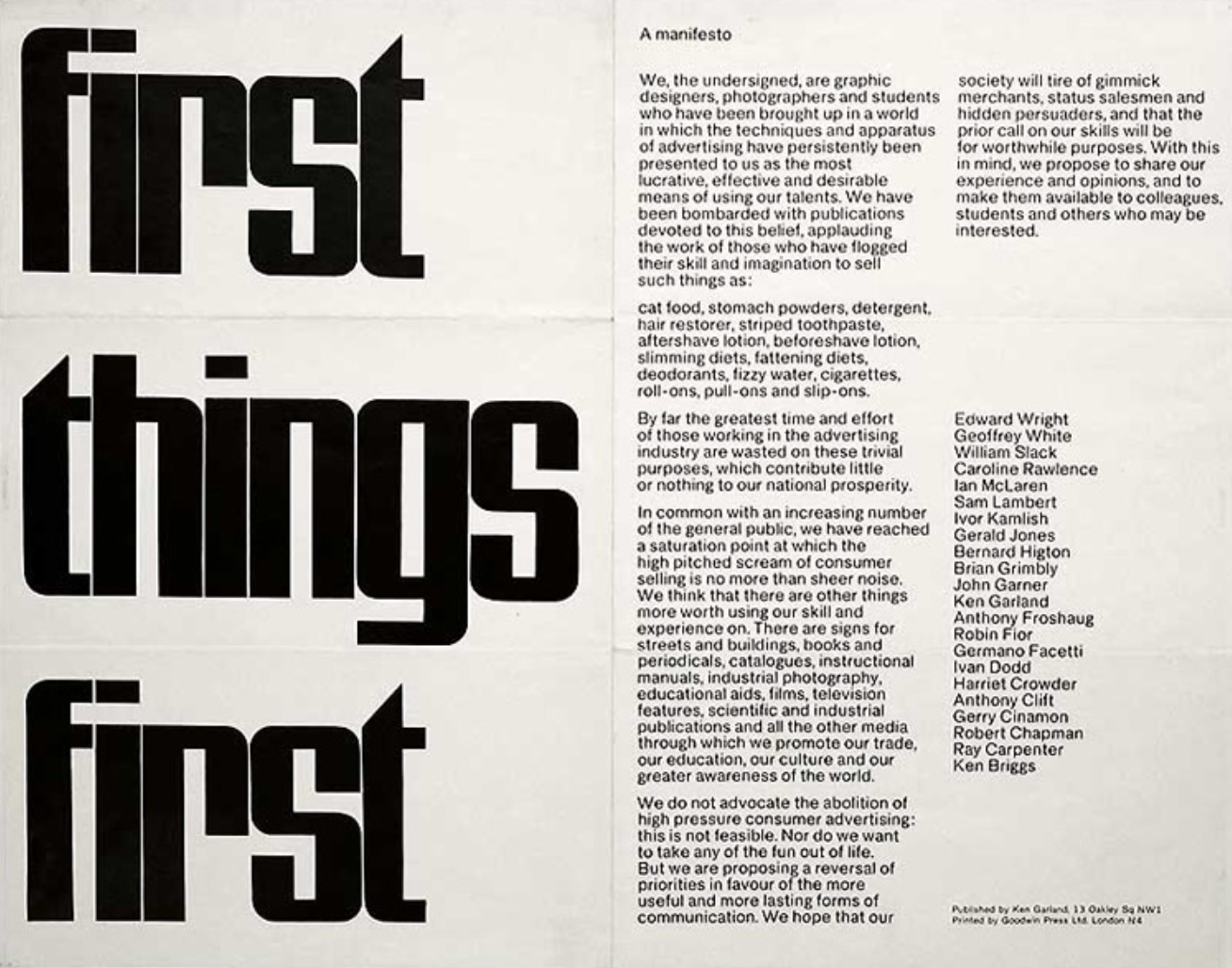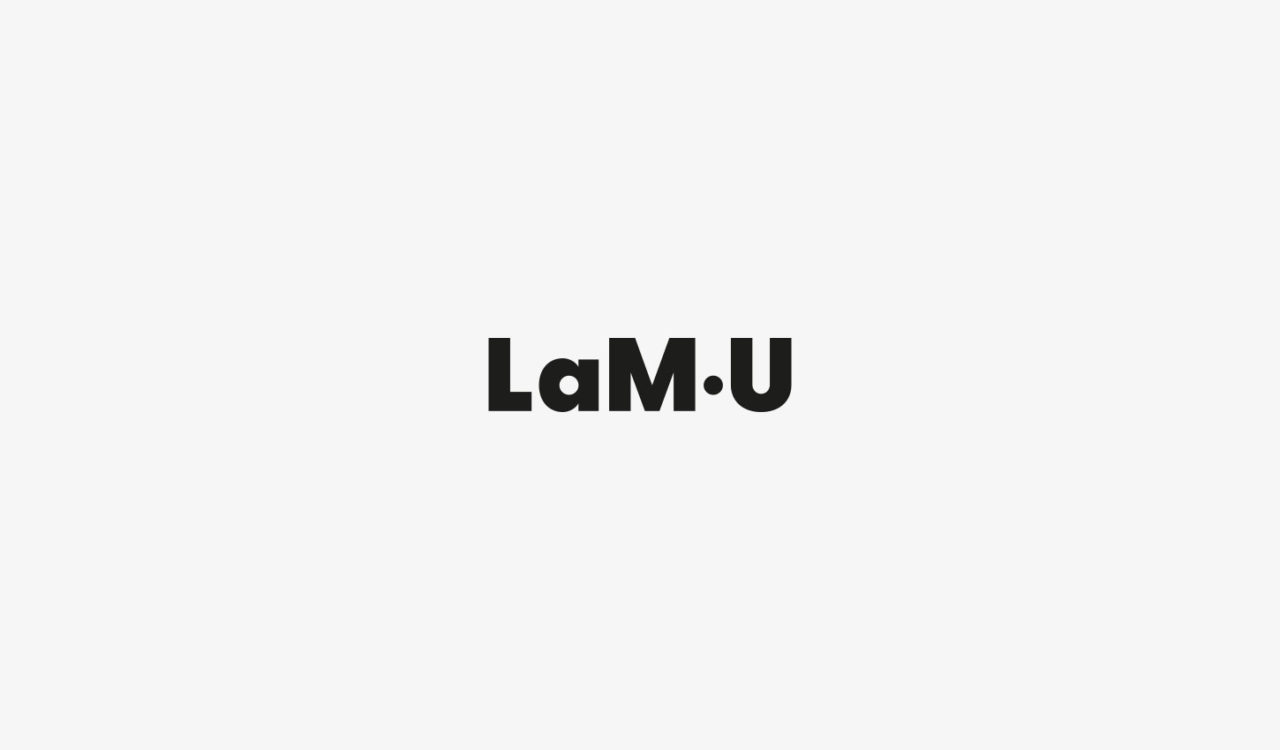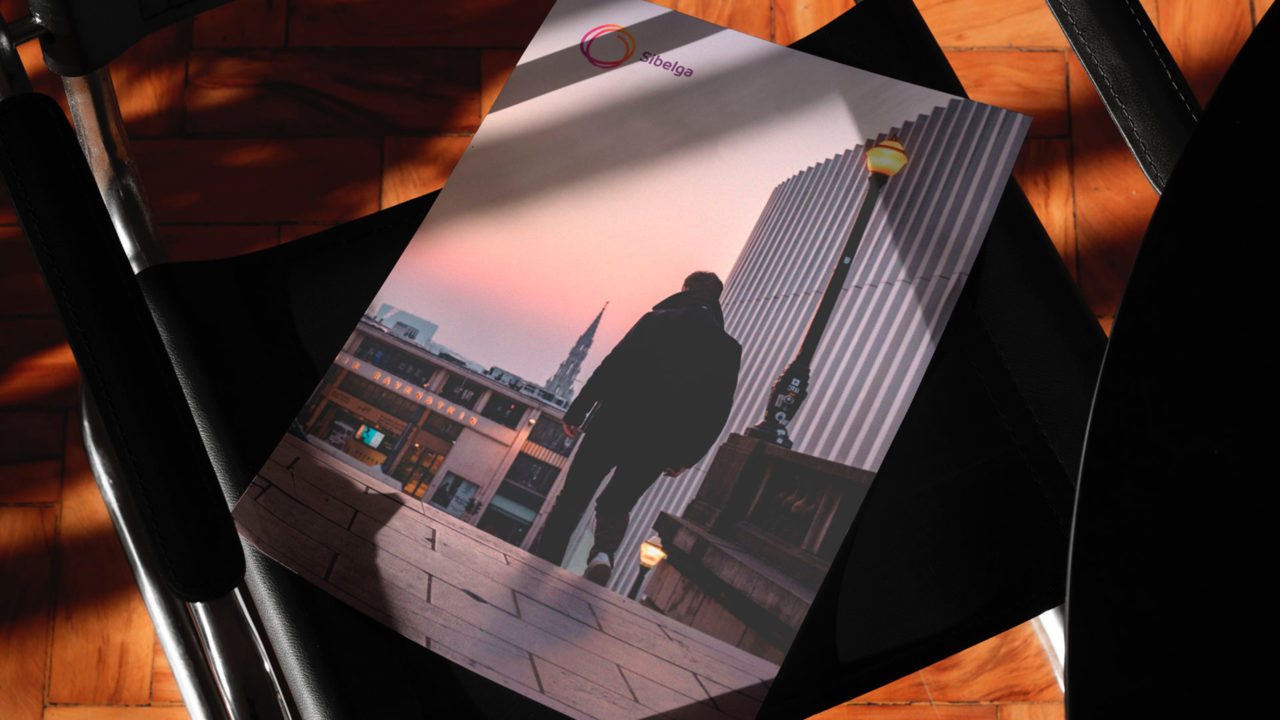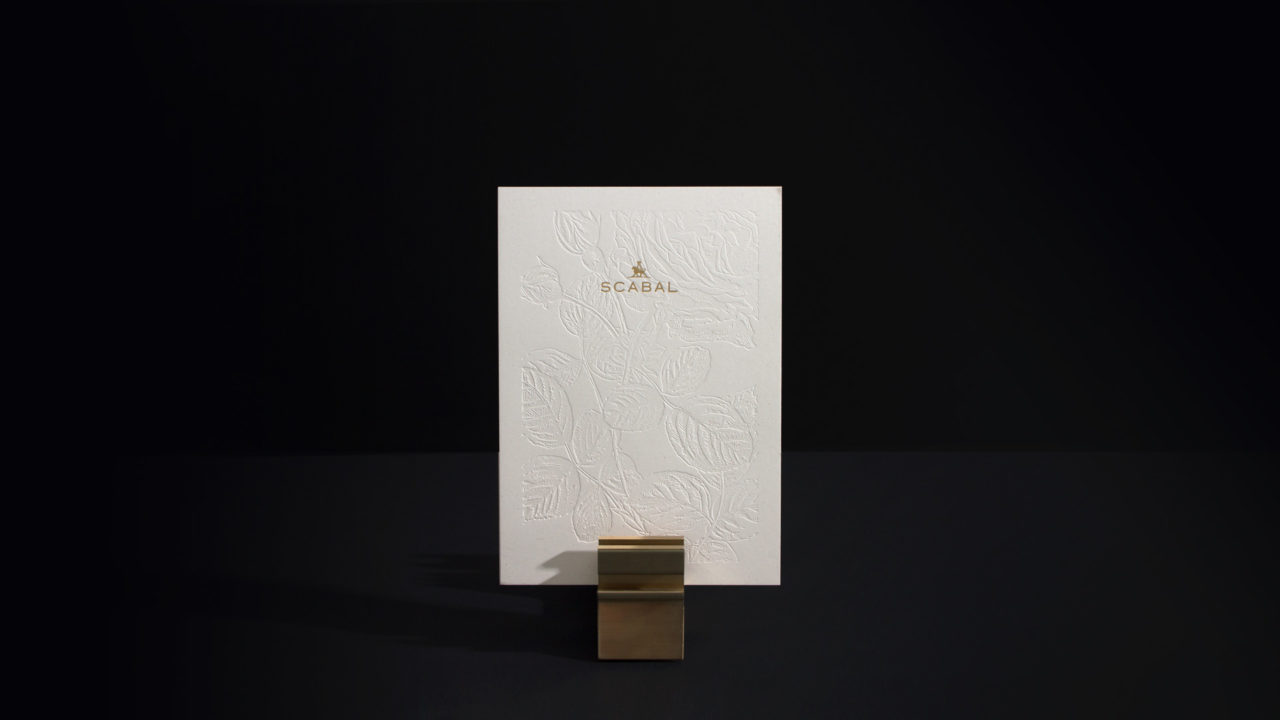There’s no way around it – graphic design requires water, energy, raw materials, and is based on the production and consumption of goods and services. With this in mind, we take pleasure in dreaming up and executing plans for more sustainable communication for our clients, be it through beer labels that use 50% less paper and ink, low-carbon web hosting, recycled scenographies, or simply online communication that replaces printed programs.
In 1963, a group of graphic designers and students led by Ken Garland got together to write First Things First, a design manifesto. The message was directed at advertising companies but struck a chord with society at large: why are we using the skill and imagination of some of our brightest minds solely for selling stuff? They called for more meaningful work in the design industry: more educational materials, public signage, and graphics for documentary film and television.
In 2000, a group of designers refreshed the manifesto with today’s priorities:
The profession’s time and energy is used up manufacturing demand for things that are inessential at best.
Many of us have grown increasingly uncomfortable with this view of design. Designers who devote their efforts primarily to advertising, marketing and brand development are supporting, and implicitly endorsing, a mental environment so saturated with commercial messages that it is changing the very way citizen-consumers speak, think, feel, respond and interact…
There are pursuits more worthy of our problem-solving skills. Unprecedented environmental, social and cultural crises demand our attention…
Their message still hits home today, and is something we keep near to our hearts, heads, and hands at Stoëmp. We’re not perfect, and we love buying thoughtful, beautiful, functional products just as much as the next person. However we do seek to be as ecological, sustainable, and user-centered as possible in our approach, whether we’re working on branding for a new product packaging or leading the creative strategy for a new community center.
One of the most obvious ways design can have an impact in sustainable advertising is through printed matter. Olivier, our production manager, is there to advise clients on paper and format decisions in order to ensure that the production process generates as little waste as possible.
This was the case with our client, hub.brussels, which is the Brussels Agency for Business Support. They work to help make Brussels an attractive place to start and grow your business. We called on the research of Sylvain Boyer, a French graphic designer who introduced the concept of ‘eco-branding’ in the 2010s. One of the conclusions of their research was that if McDonald’s simply used their logo in outline format, they could reduce their ink consumption by 34% – reducing their annual printing bill by ⅓ as well!
Encouraged by these findings, we designed a new logo completely in outline format, and two graphic systems for hub.brussels. The new outline logo would be printed millions of times per year, saving tens of thousands of euros in printing costs. One graphic system, which would be used more for recurring communication (and thus having the most output) was based on white background designs and less image-focused. The second system was more for highly visible ‘recognition’ campaigns, which incorporate darker colors and large images. By having 2 graphic systems, our clients can be highly flexible and meet their sustainability initiatives simultaneously.




